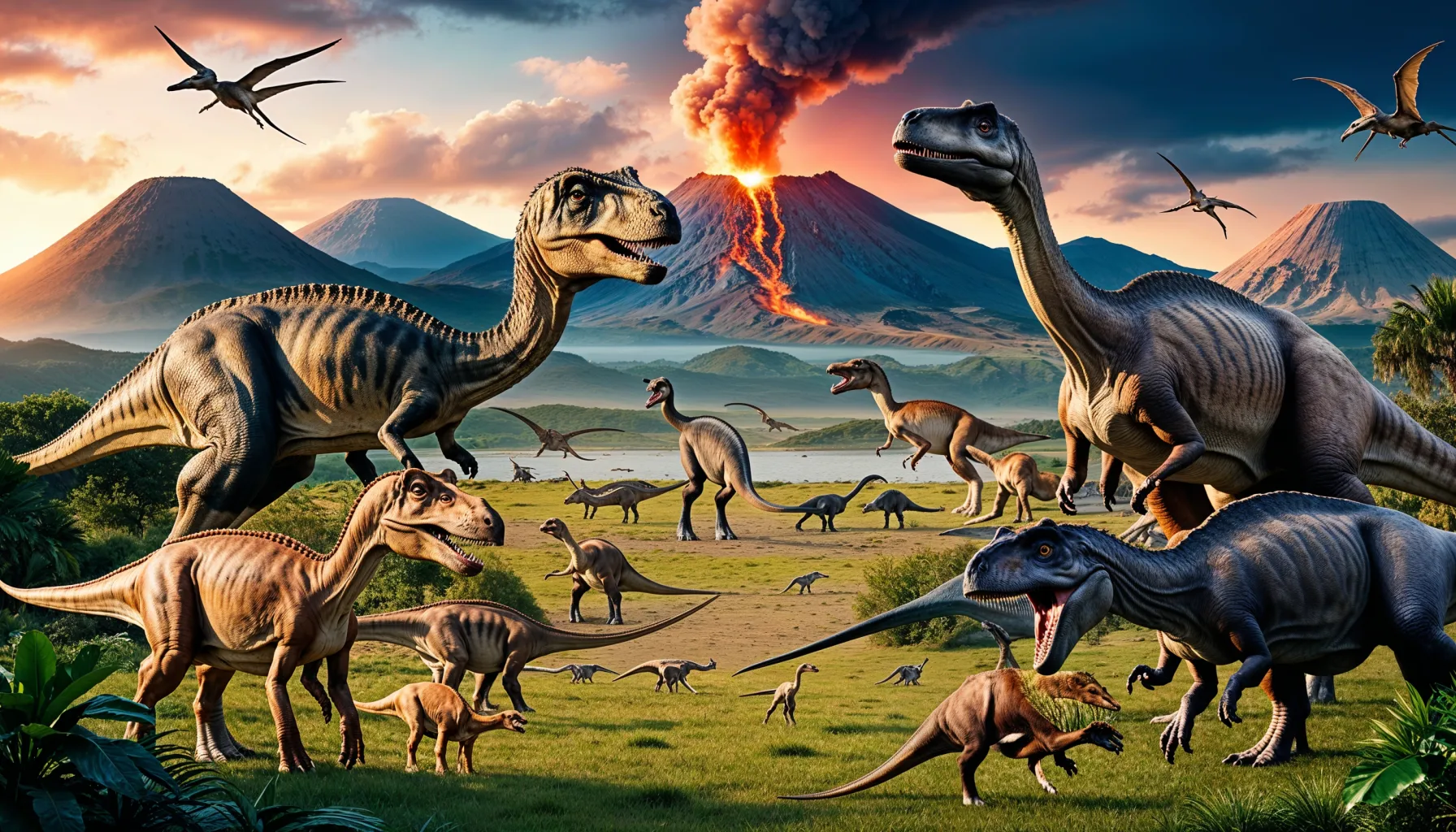The reign of the sauropods
During the Jurassic period, which began around 201 million years ago, the sauropods, a group of herbivorous dinosaurs, experienced their heyday. These dinosaurs were characterized by their immense size, long necks and tails as well as their columnar legs. Giants such as the Brachiosaurus and Diplodocus dominated the landscapes and today represent some of the largest animals ever to have lived on Earth. Their size offered them protection from predators and enabled them to reach leaves high up in the trees, a food source that was inaccessible to smaller animals. Their dominance and diversity in the Jurassic is testament to the lush ecosystems of the time and their ability to adapt to different environments.
Predators and carnivores of the Jura
The predators of the Jurassic period were just as impressive as the giant sauropods. Theropods such as Allosaurus and Ceratosaurus were at the top of the food chain, hunting both small and large herbivores. These carnivores were characterized by their sharp claws and teeth, their fast and agile bodies and their distinctive hunting behaviour. Allosaurus, one of the best-known predatory dinosaurs of this era, was famous for its size, strength and skillful hunting. The diversity of theropods in the Jurassic shows how varied the adaptive strategies of these predators were, from large, powerful hunters to smaller, faster species.
Flora and fauna of the Jura
The flora and fauna of the Jurassic period were diverse and formed complex ecosystems that supported the life of the dinosaurs. The vegetation consisted mainly of conifers, ferns and seed ferns, which provided abundant food for the herbivorous dinosaurs. This plant life formed the basis of the food web that fed both small and large dinosaurs. In addition to dinosaurs, the Jurassic was also home to a variety of other creatures, such as early mammals, amphibians, reptiles and a rich insect world. The seas were populated with marine reptiles such as ichthyosaurs and plesiosaurs. This biological diversity shows how life flourished in different habitats from land to sea during the Jurassic period.
Geological and climatic conditions
The geological and climatic conditions of the Jurassic period played a decisive role in the development and diversification of dinosaurs. The climate was predominantly warm and humid, which favored the spread of lush forests and extensive swamps. These environments were ideal for the giant sauropods and provided numerous ecological niches for different dinosaur species. Geological events such as continental drift contributed to the formation of new land masses and seas, which promoted evolutionary diversification. The formation of new mountain ranges and changes in river courses also influenced the distribution of dinosaurs and their habitats.
Scientific discoveries and fossil finds
The scientific discoveries and fossil finds from the Jurassic period have had a decisive impact on our understanding of this era. The fossils of dinosaurs such as Stegosaurus and Allosaurus, along with countless other species, shed light on the life and environment of this period. Paleontological finds from around the world, including famous sites such as the Morrison Formation in North America, have helped to complete the picture of this era. Advances in the technology and methodology of paleontology have enabled scientists to create detailed reconstructions of dinosaurs and their way of life, enriching our understanding of Earth's history.
Continue to the Cretaceous period